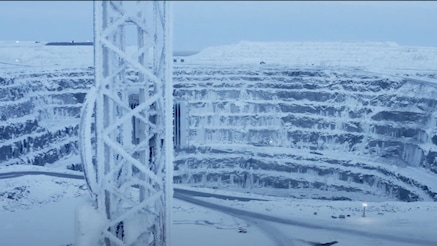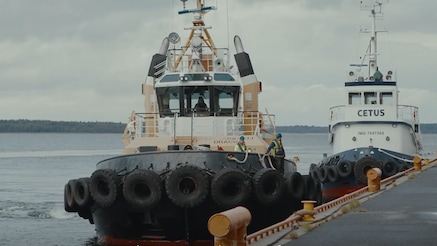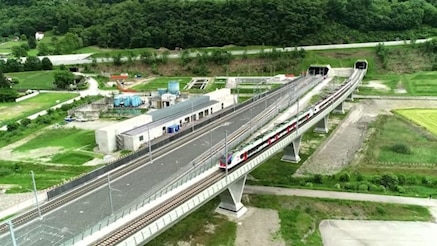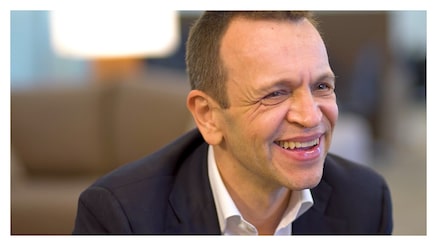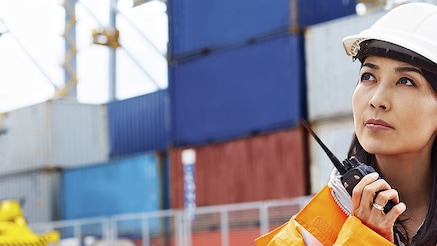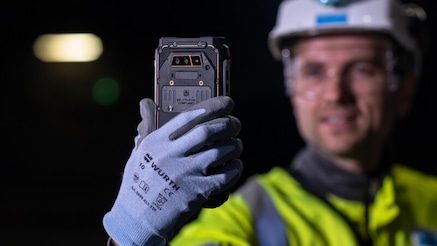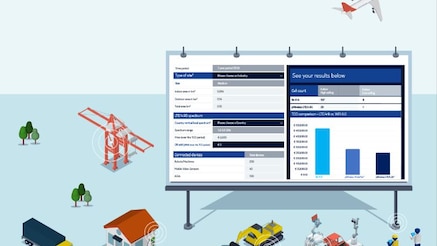Five ways connectivity
supercharges our world
From the craters of the moon to the snowy mines of Lapland, discover the exponential potential of networks

Almost fifty years to the day since we last set foot on the moon, the Orion spacecraft for the Artemis I mission splashed down in the Pacific Ocean after its mind-boggling 1.4 million-mile mission beyond the moon and back.
By the end of this decade, NASA aims to establish sustainable exploration on the moon. To achieve this, just like life on Earth, the moon will need its own network built to withstand the harsh conditions on the lunar surface and the extreme dynamic stresses of spaceflight.
So, while astronauts won’t put their feet up to watch Netflix any time soon, this will provide communication capabilities for many different critical data transmission applications. These could include vital command and control functions, remote control of lunar rovers and real-time navigation – all important to long-term human presence on the planet.
The moon network is not due to launch until later this year, but there are plenty of examples of how the newest technological solutions already utilize the exponential potential of networks back on Earth, regardless of the environment or challenges.
Seamless tech expedites miners’ safety in Lapland
Welcome to Sodankylä in Lapland, best known for the Midnight Sun Film Festival, its freezing, snowy winters, and mining. Boliden Kevitsa is one of those mines. To comply with stringent environmental regulations, mining companies must keep workers safe and operations on track in remote environments where temperatures can plummet to -26°C/-15°F.
The mine – focussing on nickel and copper concentrates – requires automation and electrification, with heavy moving vehicles, drills, other machinery, equipment, and people needing to be reliably connected every second of every hour.
Digital transformation is helping address these challenges, with private wireless connectivity and a connected suite of assets enabling continuous improvement in safety, productivity, and operational efficiency, regardless of habitat.
Real-time data turbocharges Finnish ports
For the Port of Kokkola, the third largest port in Finland, productivity is everything. To provide tailor-made services to its customers, all three port areas, all means of production, and 15 companies onsite 24/7 are connected by a private network.
This private network – covering seven access points over a vast area – meets the current and future needs of the port. Manual checks are a thing of the past, while real-time loading information enables vessels to arrive on time as soon as space is available, saving fuel.
From gate control to real-time load monitoring, smart meters to sensor information triggering fuel refilling, and the emptying of waste water tanks, productivity has never been so high.
Smart stadiums knock live sports out of the park in France
You have the tickets and survived the traffic. But your seats are almost as far from the action as where you parked your car. And who’s the person with the giant foam finger obscuring your view even further?
It’s time to say goodbye to live event blues. Thanks to the latest smart stadium technologies, revolutionary live event viewing experiences are here. Featuring virtual backstage tours, real-time game-day stats, and immersive VR and multi-angle viewing, virtual enrichment can be yours regardless of your seat.
The 2022 Tissot UCI Track Cycling World Championships at the National Velodrome at Saint-Quentin-en-Yvelines is an excellent example. It provided enhanced viewing and entertainment experiences for everyone, from fans and athletes to organizers and broadcasters – pushing the boundaries of technology innovation while ensuring uncompromising security and reliability.
High-speed Swiss Alps rail link accelerates sustainability
Around 30 billion tonne-kilometer of freight are hauled by inland modes of transport in Switzerland every year. A 12-year project to relieve the overuse of roads, the Ceneri and Gotthard Base Tunnels are integral to the New Railway Link through the Swiss Alps – creating accelerated crossings for goods and passengers.
The tunnels feature cutting-edge control and monitoring technologies connected via fiber optic cables, with around 70,000 data points and over 200,000 sensors regulating tunnel lighting, air quality, fire detection, ventilation, power supply, and emergency call systems.
Front and center of all this were more sustainable and efficient networks – underpinned by a backbone of infrastructure – to remove the need for environmentally unfriendly transportation of goods by road.
Digital transformation fast-tracks connected Brazil
Rodrigo Abreu has always been passionate about technology, from using a version of the Apple II computer as a child in Sao Paolo to taking Oi Brazil – the largest fixed telephone operator in Brazil – from crisis to prosperity.
Abreu is responsible for capturing over 3,000,000 new fiber customers in under two years. By challenging everything to bring Oi Brazil back from the brink, the fortunes of this telecommunications company mirror the fortunes of the country Abreu is proud to call home.
Collaboration was vital for Abreu to utilize the country’s most prominent communications infrastructure and provide communication, connectivity and opportunities for the people of Brazil. As part of our Boundary Breakers series, read how digitalization transformed both company and country – redefining what a telecoms business can be.
